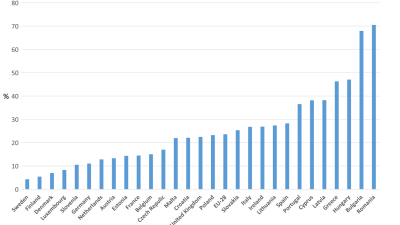Researchers at Essex University have provided a detailed analysis of the near-doubling of average UK household income over the 40 years up to the start of the global recession in 2008.
Key findings
- Employment income has been the main driver of household income growth for working-age households.
- Since 1968, male employment has fallen, whereas female employment has risen. And, since 1990, men have worked fewer hours a week, and women more. This has meant a major shift in the gender composition of employment income.
- Income from social security benefits rose considerably during the periods 1973 to 1980 and 1990 to 2003; and tax credits became important from 2000 onwards.
- Self-employment income and unearned income both grew particularly strongly in the 1980s.
The paper also focuses on the ‘squeezed middle’ – the low-to-middle income, or LMI, group. These are defined as those in the 10th–50th percentile of the income distribution, receiving less than 50 per cent of their income from benefits and tax credits. For this group:
- LMI households have seen a major shift in the sources of their income away from the earnings of a (generally male) earner to greater reliance on income from female employment and from benefits/tax credits.
- This greater diversity of income sources may reduce the risk of negative income shocks: but it also means that LMI households are now more dependent on external support, such as from the tax and benefit system and the availability of childcare.
The paper (Mike Brewer and Liam Wren-Lewis, Why Did Britain’s Households Get Richer? Decomposing UK Household Income Growth Between 1968 and 2008–09, Working Paper 2012–08, Institute for Social and Economic Research, University of Essex) is available on the Institute for Social and Economic Research website.



 PSE:UK is a major collaboration between the University of Bristol, Heriot-Watt University, The Open University, Queen's University Belfast, University of Glasgow and the University of York working with the National Centre for Social Research and the Northern Ireland Statistics and Research Agency. ESRC Grant RES-060-25-0052.
PSE:UK is a major collaboration between the University of Bristol, Heriot-Watt University, The Open University, Queen's University Belfast, University of Glasgow and the University of York working with the National Centre for Social Research and the Northern Ireland Statistics and Research Agency. ESRC Grant RES-060-25-0052.






